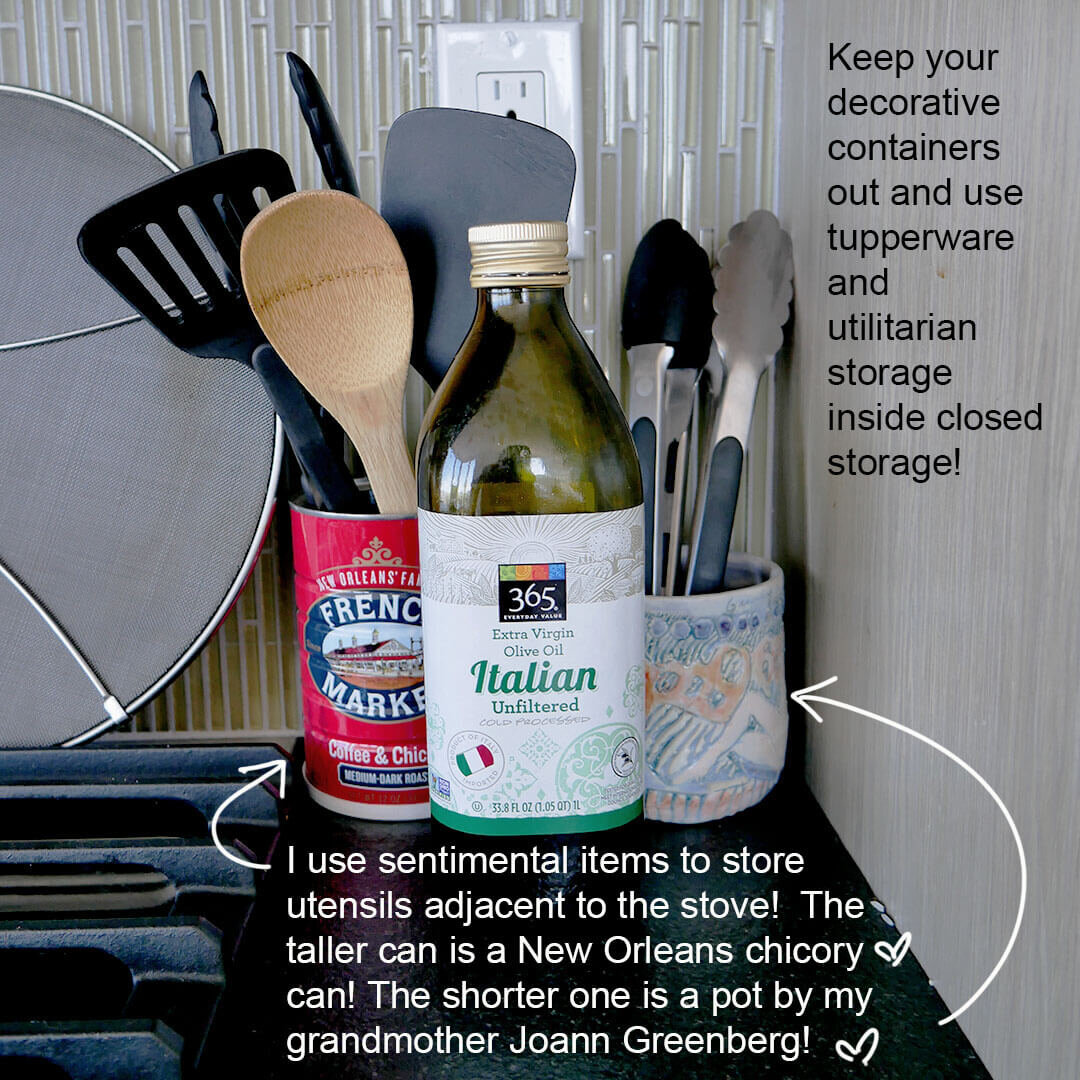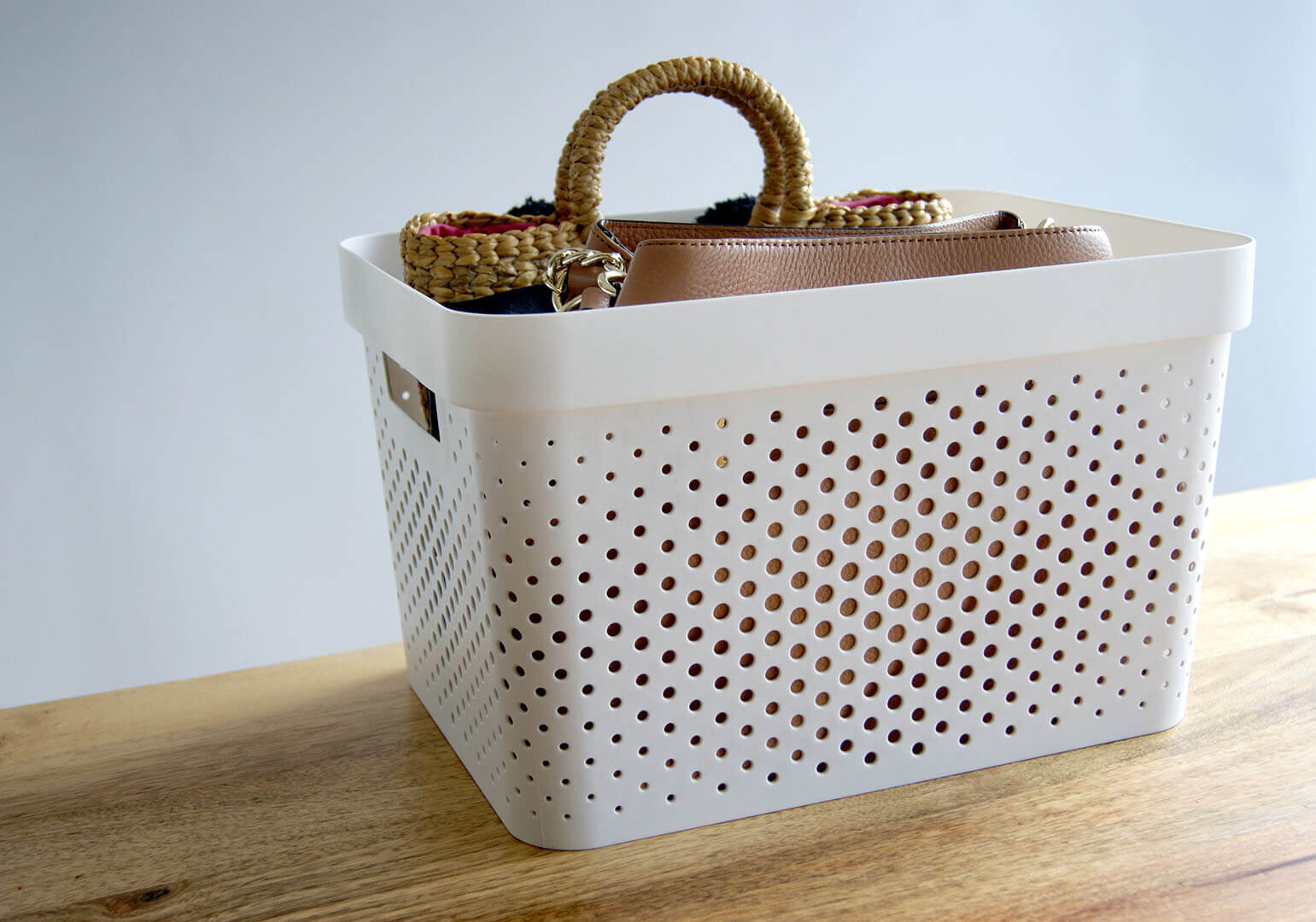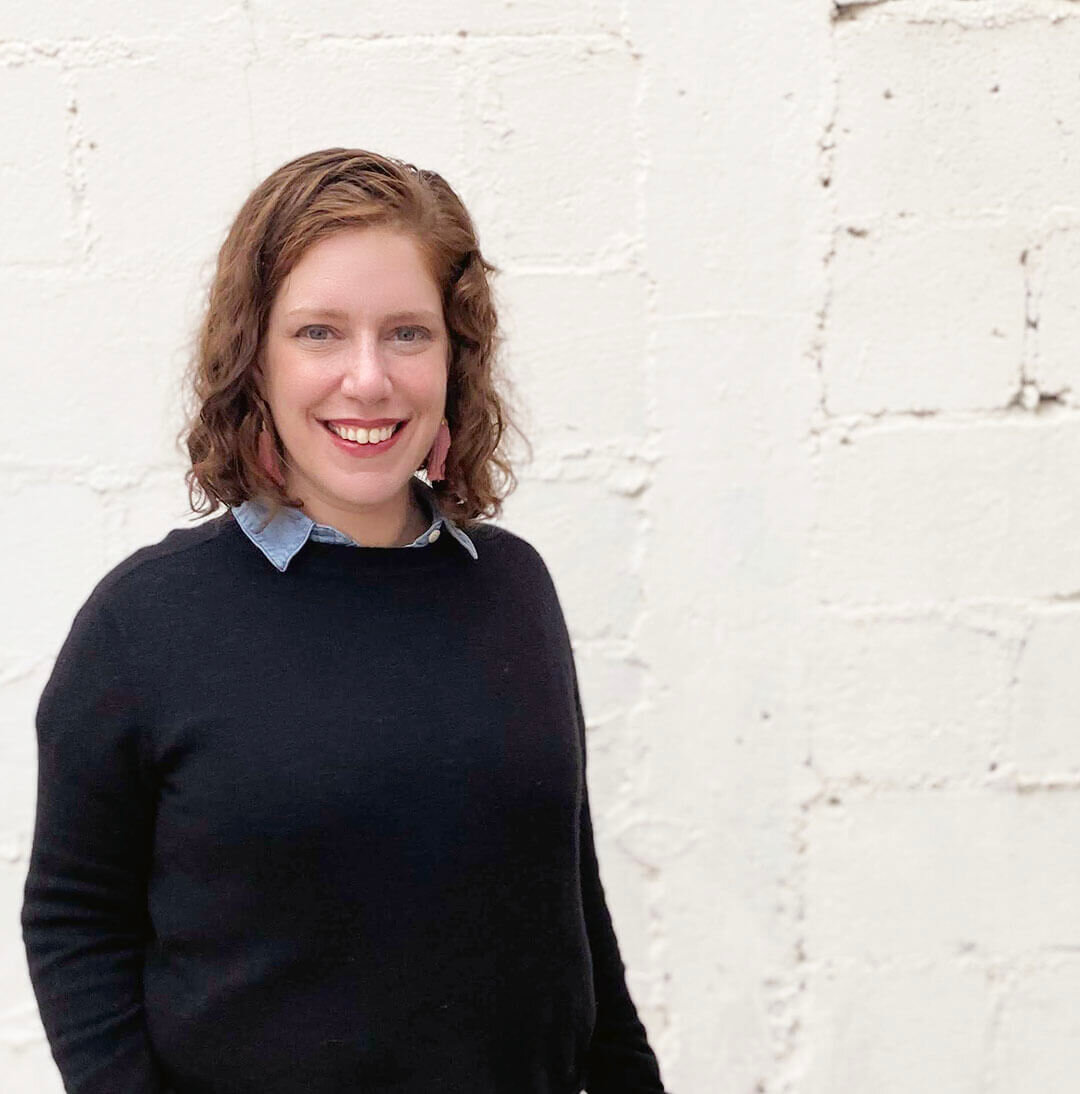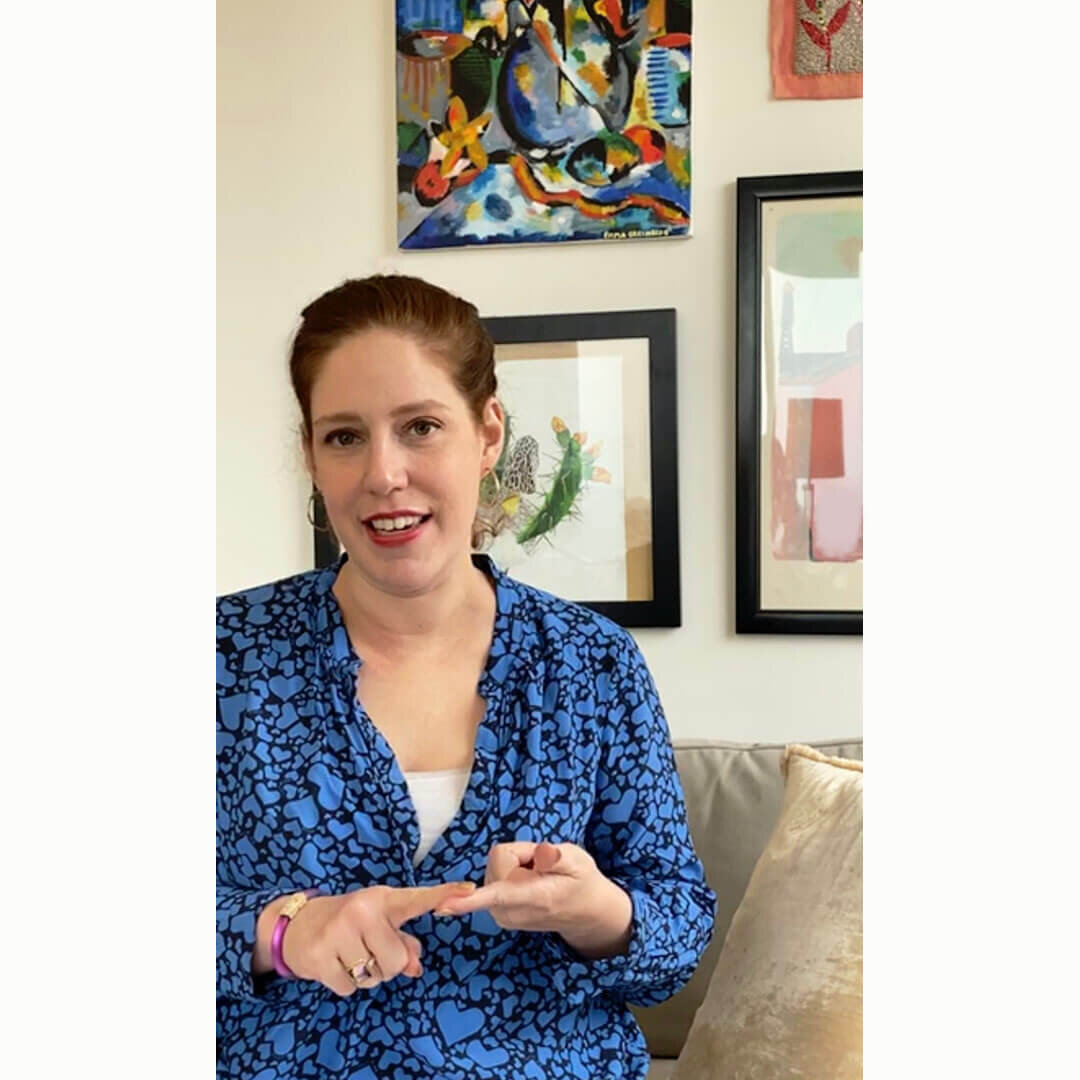Interview: Emma Greenberg of Emma greenberg Architect
I’ve been following Emma on her social media for quite a while, and I’m so happy to have her here for an interview!
She’s been teaching her audience how to elevate their residential and commercial interiors on her Instagram and Youtube Channel, Emma Talks Architecture.
She also started a consulting company to work with other architects and clients at Emma Greenberg Architect, PLLC.
But what inspires me the most is her ability to put herself out there and make her own opportunities.
How does she do it all? Let’s get right into it.
From Art History to Architecture
Joann: From an Art history major to getting a Master’s of architecture, and now sharing organization tips on your Instagram.
Take us through the journey of how you got here.
Emma:
I grew up in New Jersey in a family of artists including painters, bookbinders and ceramicists.
I got my BA in Art History from Emory University.
I found that I preferred to create art, draw and paint, rather than study it.
In turn, I obtained my Masters of Architecture from LSU.
In graduate school, I loved creating models, drawings, and presentations.
After graduating, I moved to New York City, and after six years of experience in small firms on residential, commercial and retail projects, I started my own consulting firm.
I consult with other architects on their work, and I also work on my own projects.
My next goal is to start a new architecture firm, and create wonderful residences, and commercial spaces for companies.
After I was licensed, I began building my own brand by building connections and my visibility on social media. I’ve started an Instagram to share my work and knowledge with a larger audience.
Inspiration as An Architect
Joann: What inspires you most as an architect? What is most important to you?
Emma:
As someone who has grown up drawing and painting, my favorite part is selecting finishes. It doesn't even feel like work.
Once I enter a space for punch-listing, it is so gratifying to see the subtle nuances of various materials, including countertops, tiles, and paint colors woven together.
Working at a small firm, I had the opportunity to select finishes and learn from an experienced office interior designer.
For a commercial interiors project, the client was staying in a temporary space, while the office was renovated.
She loved that it was painted different bright colors and wanted to incorporate this into the design.
I didn’t feel that a bright color was right for the open office.
Instead, I drew from the warm iridescent workstation fabric panels and suggested a warm green gray, Benjamin Moore, Gray Cashmere.
This color for the open office was unique and also serene. We incorporated soothing colors, blues and purples, as accent walls and in the offices. The office felt both animated and elegant!
The process of collaboration during the design and construction is also extremely exciting.
I was working on a gorgeous loft renovation in Manhattan.
The previous renovation was quite good, though older, so we modernized the interior, updated services, and installed high-end custom pieces, like a wine cellar and fireplace.
The custom fireplace had a stone facade and steel sides with shelving.
The first price we received for the steel inserts was exorbitant, because they had to be movable.
The contractor reached out to a metal worker and artist for another price.
We met with him and when we arrived, he presented us with a beautifully crafted model of the blackened steel plated wood with a heavy duty caster for maneuverability, which could also lock in place.
I was blown away by the clever ingenuity and artistry.
I also reviewed the hand drawn shop drawings of the stone mason, who shared he had installed stone in the finest hotels in NYC.
Bringing a design to life through collaboration with expert artisans was deeply satisfying.
How did Emma Talks Architecture Get Started?
Joann: How’d you come up with the idea of sharing organization and design tips on social media?
What was the catalyst to get started?
Emma:
I reflected on how my friends would comment on how beautiful and tidy my apartment was.
I wanted them to understand that this was the result of learned skills that I used to create a comfortable and dynamic home.
At a past firm, I worked on an apartment combination for a young family.
The client had researched Pinterest for storage solutions.
We designed and customized these components, such as a mudroom area with bench and hooks above, hang rods, and shelving behind doors for bulk and pantry items.
The Kitchen featured a spice pull out, lazy susan, and trash drawers.
The Master Bathroom included a hair dryer drawer, and linen closet with back of the door storage and a laundry hamper pull out.
The storage fit the client’s lifestyle like a glove.
Smart design created a feeling of a spacious home within an urban apartment.
In my own apartment, I had a ton of resources from schooling, work, and experienced architect mentors that allowed me to express my own aesthetic.
I drew the floor plan and created furniture layouts to support functions like Living and Dining.
I layered in lively art, plants, and color-enhancing rugs.
I experimented, buying a more eclectic lamp.
I decluttered and arranged according to my needs.
I further organized items into categories, with bins for purses, trays for sunglasses, and plastic drawers for toiletries inside the bathroom vanity.
I started my Instagram account @emmasarchitecture to share both my portfolio and designed apartment.
I wanted to share my expertise and aesthetic with more people like my friends!
I also created a YouTube channel, Emma Talks Architecture, and include my recorded Instagram lives about topics, such as hanging art, as another form of teaching.
How to Balance as a Business Owner and Content Creator
Joann: Not only are you starting up Emma Talks Architecture, but you’re also running a design firm, Emma Greenberg Architect, PLLC.
Lots of women struggle with balancing between work and family, but how do you prioritize and manage your time?
Emma:
I manage my time by blocking it out hourly.
I take my clients’ needs seriously, and work hard for them.
Especially for client meetings, I aim for efficiency and clarity by creating an agenda and taking minutes, to protect their time and avoid repetition.
I organize my day in Google Calendars to meet my weekly goals, and include breaks and lunch.
I work on deadlines for shorter durations over a longer time period, which is more enjoyable and effective.
Working on things for a set period of time also prevents me from overworking them.
It's important to set boundaries. There are always projects we can take on and events that we can go to.
We have to protect what matters to us, such as time to ourselves and with friends and family.
I’m currently reading, The Power of a Positive No, by William Ury to develop this skill further.
In the book, he discusses how to say no, protect your needs, and still preserve the relationship. It's also important to communicate clearly.
Starting Your Own Firm
Joann: What do you do at Emma Greenberg Architect, PLLC? How did you get that started?
Emma:
Once I passed my exams, I started focusing on my personal brand by starting a consulting firm to work with other architects on their projects, and also work on my own ventures.
My first client followed my Instagram account and approached me to consult on a bathroom gut renovation.
Construction for the project began right as quarantine started.
I oversaw construction by reviewing progress videos, having video calls on site, emailing and texting.
In many ways the project was like any other, with site conditions, such as an unfortunate ceiling beam, blocking the ideal location for a recessed downlight.
Bathroom Renovation Before
Bathroom Renovation After
We resolved this over video call, talking through options with the contractor.
I relied more on the team and client, which allowed me to exercise my customer service skills, batching requests and being as clear as possible.
Through this experience, I saw that online consulting was a viable business model.
I’ve begun accepting online interior consulting clients, such as directing storage and art placement.
Projects, such as art installations, can instantly elevate your mood because art is relaxing and uplifting, which is what we want to feel when we’re spending so much time at home.
Also, remotely is also a way to serve both local and national clients.
Finding Mentors
Joann: Did you have any mentors or communities along the way?
Many women struggle to find a female leader in their firm to be a mentor. Do you have any advice for them on cultivating a mentorship?
Emma:
I worked at a small firm and had a wonderful male mentor, the principal of the firm.
He encouraged me to get licensed, gave me on-site experience, and experience meeting with clients.
I sat with him and learned while he marked up drawings.
I also had difficulties finding a female mentor so I found communities.
I worked with a highly effective and inspiring career coach, Ashlee Klevens Hayes, and joined her mastermind group.
This support system allows me to speak openly, gain encouragement, and learn from Ashlee and the group.
I also found wonderful online communities. I belong to the supportive Facebook group, Women Architects Collective.
I love being in a community of all female architects where we give each other career advice, such as salary negotiations, and discuss navigating tough situations in a male-dominated field.
I also benefited from a great community after attending the Young Architect Conference.
I made many friends and mentors at the start and also well into their careers.
A mentor both guides you and also opens you up to new opportunities.
Younger mentors exposed me to the possibility of social media and content creation.
Once I was ready to start my own business, I re-connected with some of the conference attendees who were firm owners.
I reached out, introduced myself, and requested a 20 to 30 minute call.
They readily accepted, which assuaged my fears and empowered me.
If you’re looking for a mentor, be open to having many at different stages in their careers.
Look for communities and attend networking events and connect with women who are where you want to be in the future.
Getting Comfortable In Front Of Cameras
Joann: Not only do you share your organization tips on Instagram Live, but you also started a Youtube channel.
Do you feel comfortable in front of the cameras? How do you overcome self-doubts to show up consistently?
Emma:
I remember the first time I stood and asked a question at a conference.
My throat tightened, vision was blurry, and somehow the words came out.
Public speaking seemed new and different from client meetings, which I excelled at.
During Architecture School, I learned that you could have the best project, but if you didn’t put in time in Photoshop, it might not seem as credible.
Similarly, if I rehearsed my final presentation, it was better received.
Since then, I’ve honed my presentation skills.
I prepare, create an outline with a thesis and supporting points, have confident body language, smile, and maintain eye contact.
My sense of ease allows clients to trust me, resulting in decisions and forward project progress.
Once I was in front of the camera, I again felt just like I did at the conference: nervous and like all eyes were on me.
I’m working with an incredibly talented and empowering voice coach, Alicia Dara, teaching me the technical side of public speaking, including vocals and body language, as well as ensuring that I present myself confidently and powerfully.
I prepare for each Instagram live or interview, like I would for a meeting.
I started having fun when I pretended that a Live actually was a client meeting.
Suddenly, the smiles came easily and the forced jokes stopped.
I was simply transferring my expertise.
I’m doing the interviews once a month and IG lives every Friday at 3 pm EST.
Practice helps tremendously and rewatching for notes for future videos is the best form of feedback.
My advice is to try even if it’s uncomfortable, practice with Lives or Toastmasters and learn speaking skills through coaching, books, or podcasts, and relate it to something you’ve had success with.
I also started video by interviewing others.
This relieved pressure because it’s easier to steer a conversation than lead it.
I fed off my curiosity and desire to connect with the guest.
I think it was a great way to get my feet wet.
Video is a powerful tool to connect with my audience.
The response to my videos has been very high.
It’s both easier for me to explain and others to understand concepts from watching videos.
Texts from friends telling me that they’ve bought art within their budget by buying a print from a favorite artist after watching my video encourage me.
In the end, it’s an effective tool to help me accomplish my mission of helping others to be surrounded by beauty so I invest my time and energy and set aside my self doubts.
Getting Your Architect License
Joann: When did you get your license? How was that experience for you?
Emma:
I passed my last test this past fall 2019. I started in Fall 2016 with the 4.0 exam version with PPP, CDS and SD.
After failing SPD multiple times, I felt really discouraged.
I wasn’t part of a community taking the exams and felt isolated and stuck.
I was saying things like,
Maybe I wasn’t meant to be a Licensed Architect.
A mentor encouraged me to change my approach instead and I joined the ARE Boot Camp.
I discovered that I needed to study more and with more resources.
While working full time at a firm, I began studying 10 to 20 hours a week.
I fit in focused study for 30 to 90 minutes before and after work, and during lunch, and would study 4 to 8 hours on weekends.
I studied on vacations, and listened to videos on foundations while on the drive to Yellowstone.
I ran many study sessions for the bootcamp on subjects I struggled with, such as seismic and hurricane design.
Discussing topics translated into much a deeper understanding of them.
I’m so proud of my hard work and even happier that I became a much better Architect in the process.
I transitioned to the 5.0 testing version and took PA, PPD, and PDD.
I still remember leaving my final test knowing that it was my last.
The woman at the testing center who was checking me out was kind and had seen me many times before.
She commented, ‘You have been here a lot!’ I smiled and said, ‘Yes, I have! Have a great day!’
While testing, I had experienced multiple failures.
My greatest pass was setting aside the idea that my journey had to look a certain way.
My resilience, support system, and hard work allowed me to complete the process!
My licensure took 8 months to be processed once I passed my tests.
There were delays due to further requested submissions, like fees and a transcript.
The pandemic began and there were more delays.
My perseverance and follow up, setting reminders for myself to check in, pushed the process forward.
I found out early this month that I was licensed and I’m so happy! (Congratulations Emma!)
Advice for Young Women Architects
Joann: As a woman having her own business, what’s your #1 advice for aspiring young women architects?
Emma:
Focus on getting licensed as soon as you can.
Like all things that are important, it takes a lot of work.
Being licensed will increase your opportunities to earn more, gain employment, advance your career, and have your own firm.
Make your own opportunities.
Realizing that no one is going to ask at the perfect time if you want a raise, to take on a project, or new role, is incredibly freeing.
Ask for these things and know that when you try something new, you will make mistakes.
Everyone does and it’s ok. It’s the only way to grow.
I found that I could make my own opportunities once I began focusing on my personal brand.
I created my own Instagram account to put my work and vision into the world.
I created YouTube videos and approached professionals who I wanted to connect with.
I attend network events and follow up to form professional relationships.
Once you start making your own opportunities, others follow.
Now even you have approached me to collaborate with you on her incredible blog!
That would not have happened if I hadn’t put in a lot of work and put myself out there first.
Joann's notes:
Emma's doing exactly what you can start to do today.
Building your personal brand with the skills you already have.
You don't need to learn a new skill or be a professional guitar player overnight.
Figure out what you can do that your friends already applaud you for.
Then build your personal brand around those skills like Emma here did with her organizing and decorating skills.
What's Next for Emma Talks Architecture?
Joann: You seem to be getting traction with Emma Talks Architecture. Where do you see this going? What’s your goal in the future?
Emma:
I created a YouTube channel, ‘Emma Talks Architecture,’ to connect with other architects and architectural content creators.
Here they share their stories, professional guidance, and expertise with many others.
I want this to be a resource for those seeking advancement in their career, and a community.
I connect with inspiring professionals who are changing the profession, challenging the status quo, and who are leaders.
Architecture is a multi-faceted field, and people can capitalize on their skills in many different ways.
Patrica Ashleigh, for example, discusses her non-traditional career path, working for a developer.
I also feature professionals outside architecture, such as real estate agent, Emilie Riser Moseley, discussing residential design for resale.
I want architects to serve our clients as best as possible so we need to discuss design with those who don’t think or were trained like us.
I reach out to women and minorities, along with men, to feature their work in the profession.
According to a 2018 study, women make up 20% of licensed architects and 17% of partners or principals in firms.
In turn, I hope that these visuals of women and minorities as leaders and change makers are inspiring.
My next goal is to create a podcast.
Listeners told me that this would be an easy way to listen and I hope to reach as many people as possible.
I would love to improve the production for the best possible experience for listeners!
Where to Find Emma Talks Architecture?
Joann: How can our readers keep in contact with you and find out more?
Emma:
Visit my website, emmagreenbergarchitect.com, for more information. You can also find me on Instagram, @emmasarchitecture, and follow for advice on elevating your space and for delightfully inspiring residential and commercial interiors. You can always message me directly here!
Please subscribe to my YouTube channel, ‘Emma Talks Architecture,’ for interviews and recorded Instagram lives and videos!
Reach out to me by email, emma@greenberg-designs.com.
Fun Facts About Emma
1. Where do you live?
Brooklyn, NY
2. What’s your biggest pet peeve?
Being late.
3. Morning person or night owl?
Morning person! I start feeling sleepy around 9:30 pm.
4. What’s your favorite place/city on earth?
New Orleans, LA
5. Coffee or tea?
I love coffee! However during quarantine, my coffee maker stopped working so I’ve switched to tea and feel much better.
6. If you have a magic wand right now, what would you do?
I would go to Paris for inspiration! I’d go to all the museums and cathedrals to sketch, and I’d sit outside at a cafe and drink coffee again.
You Might Also Like


























